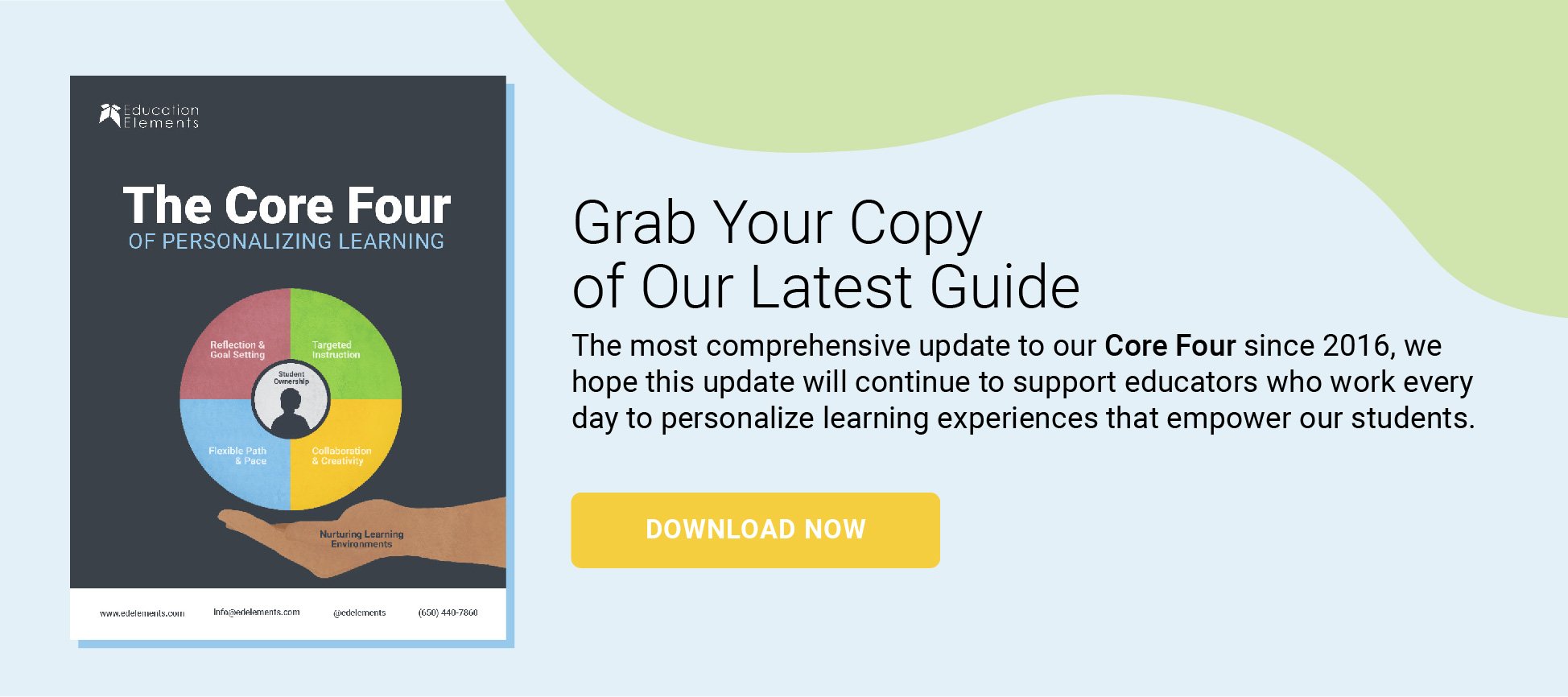Reflection and goal-setting is the simplest way to begin personalizing learning because it mirrors a practice we engage in every day of our lives. Sometimes this shows up in small ways, like aiming to show gratitude more often, taking the stairs instead of the elevator, or reading more. Technology is playing a larger role in this practice, especially as it applies to our health. This can be as simple as checking your steps on a smartwatch to signing-up for an exercise and diet app. We reflect and set-goals at church, in a therapy session, at the gym, when we go shopping, or around the dinner table. It is one primary format in which we aim to improve ourselves. And it’s one reason why reflection and goal-setting is often the first step educators take to personalize learning.
Student reflection and goal setting are practices that can build a bridge for students between the content they are learning and why they are learning it. While these are two separate practices, they can, and should be interconnected in the classroom. Reflecting on what we know and how we learn builds self-awareness that can make goal-setting a truly meaningful experience.
Reflection
Reflection is a process where students describe their previous learning, how it evolved, and how it might impact future learning. In the same way we build academic skills in students, reflection is a skill that needs to be carefully cultivated in our classrooms. We should show our students different ways it can look and guide them to choose the process they find most meaningful. Reflection can begin with making time for simple prompting questions at the end of a lesson or after an assessment. Educators can help student begin to reflect by using prompts such as:
- What is one thing that would improve your practice in the future?
- How would you rate your learning experience? (5 stars, red/yellow/green, thumbs-up/down, etc.)
- What did you learn? What do you still want or need to learn?
Self-Reflection
Supporting student reflection begins with self-reflection. Investigating and understanding our own identities, biases, and experiences is a crucial step to helping students navigate for themselves. Through reflection, educators and students can develop self-awareness competencies, from identifying one’s strengths, to developing clear goals for specific tasks, amongst others (CASEL, 2020). Through reflection and goal setting, students are more well-positioned to take academic risks, learn from their experiences, and more intentionally tackle the next task in front of them.
Sara Theriault shares how she incorporates student reflections and goal setting into her classroom.
Goal Setting
Goal setting is one piece of the reflective process. Goals allow students to name milestones they want to achieve or practices they would like to grow in. Milestones could be around performance, effort, or habits. Setting goals empower students to dictate their own indicators of success that are important for their personal growth. Individually crafted goals can foster a sense of ownership in students when it comes to their learning. Goals create an opportunity for connections to be drawn between classroom learning and broader dreams students hold for themselves.
Modeling
Think back on the different ways that you and your students have most successfully reflected and set-goals in the past. Reflection and goal-setting is a habit that can be developed over time. Modeling this process is one of the best ways to start this work. Share ways in which reflection and goal-setting have been successful and challenges you’ve encountered. This will help make your classroom a safe and supportive place for students to be reflective, vulnerable, empowered to own their learning.
More Personalized Learning reading
Blog: Six Examples of What Personalized Learning Looks Like
Blog: The Core 4 Elements of Personalized Learning
Blog: Personalized Learning Requires Flexibility: An Update to Education Elements’ Core 4
.png)




